Unleashing the Power of Cycling with Tom Flood
How creative design and copywriting can flip the script promoting bikes and active transport.
Check out the special subscription offer at the end of the post!
I recently had the honour of being the opening keynote speaker at Unleashing the Power of Cycling, a conference organized by the University of Toronto’s School of Cities School of Cities’ Urbanist-in-Residence, Lanrick Bennett Jr. It took place in the Toronto City Hall Council Chambers, a wonderful room designed by Finnish architect Viljo Revell, completed in 1965, a year after Revell’s very premature death at the age of 54.
Revell would be appalled at what they have done to City Hall; you used to walk in under a low ceiling to have it visually explode in the middle of the circular lobby. Now it is all shut off with metal detectors and bag checks more intense than at the airport. They have completely ruined the experience. (they almost ruined the conference, not letting Lanrick bring in his bike and delaying the food and coffee.)
I was asked to speak about “the carbon cost analysis of cycling”, and my talk can be summarized in the following points, which I previously published in my post Piles of research on why we should promote bike lanes, bikes, e-bikes and e-scooters:
Bikes, e-bikes, and other forms of micromobility have significantly lower carbon footprints than ICE cars or electric cars.
Bike lanes encourage more people to ride longer distances.
Properly designed, bike lanes do not significantly delay drivers.
The e-bike revolution will put more people on bikes and will unlock the suburbs, which are the source of the cars.
Promotion of cycling and micromobility could be the most significant approach to reducing carbon emissions.
But for me, one of the highlights of the conference was meeting Tom Flood in person. I didn’t take a selfie with him so have to make do with Landricks’ here.
I first learned about Tom in 2020 after reading an article he wrote for Transportation Alternatives, also published in Streetsblog USA. He was working in marketing for the car industry at the time, and explained interviewed him for a (now deleted of course,) Treehugger article:
"I worked in the ad world for quite a while and on auto accounts in Toronto – then exited for a long time when my kids were born. This site and bike work is more an outlet for my frustrations but people have been asking about it and then TransAlt asked me to produce some stuff earlier this year for them, and it just keeps kind of rolling. I still do marketing work as a regular gig too.”
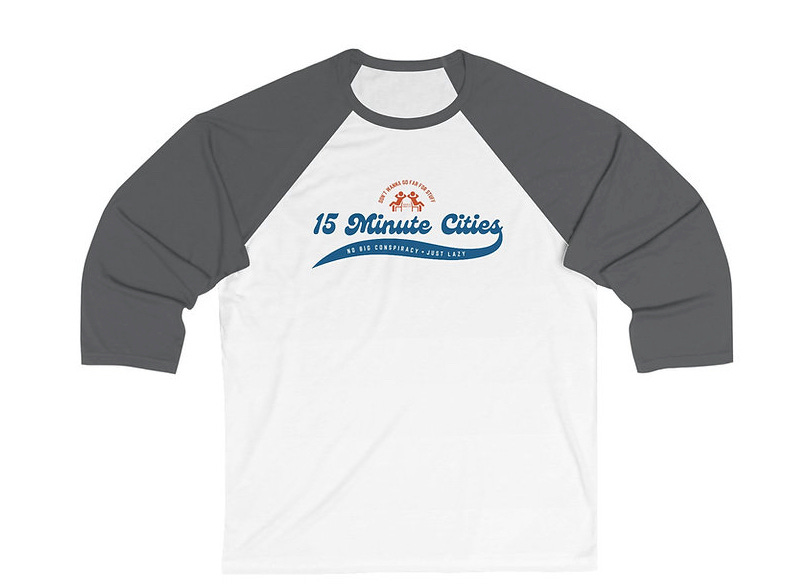
Tom is now working full-time on bike advocacy at Rovélo Creative, where he keeps cranking out bike ads, T-shirts, posters, and “in addition to this creative and strategy work I have been writing, giving lectures & running workshops that focus on reframing the mainstream narrative around road safety, road violence and active transportation.” Here are some of the posters and videos that I have loved over the years, reproduced with Tom’s permission:
One of my favourites is an early one. “the all-new 2020 child” invisible to the driver of the pickup truck.
It’s probably been knocked off a million times, including by me and my granddaughter Edie.
However, I think this is my all-time favourite, such a strong message in those words.
Here is a powerful video version of a similar message.
Lately, Tom has been doing social media posters for Dave Shelnutt, the biking lawyer, pointing out the silliness of the “shared responsibility” campaigns that are often run by the police. (here is my interview of Shelnutt, We Shouldn't Need a Biking Lawyer, but We Do)
Lately, Tom has been doing a lot more with words than with images, with clever copywriting in a number of languages.
Two more that I love; pushing a baby carrriage absolutely radicalized my daughter. And of course, highways get approved without a second thought but every bike lane is a pitched battle.
Tom goes on about the imbalance and absurdity in the way we treat cars vs pedestrians and cyclists. He shows us how to flip the script, to change the focus, to reframe road safety. We need more of this, and more of Tom Flood, and I need more 15 minute city T-shirts.
There’s Tom sitting in the Mayor’s chair, talking to Lanrick, who put on a fabulous conference- so many interesting speakers and panelists. Get Tom’s posters and swag at Rovélo Creative.
Special offer!
I do not want to put up a paywall on this site, but it provides a meaningful portion of my income. So here’s a limited time offer: I will send a signed copy of the print edition of “Living the 1.5 Lifestyle” to anyone in the USA or Canada who signs up for a one-year subscription (C$50, cheap at about US$34.95 )
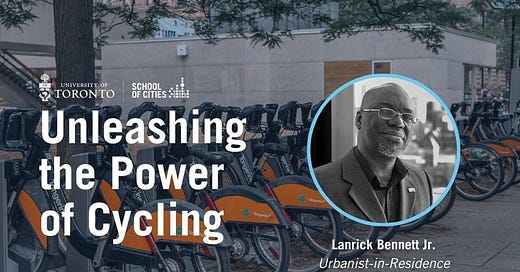



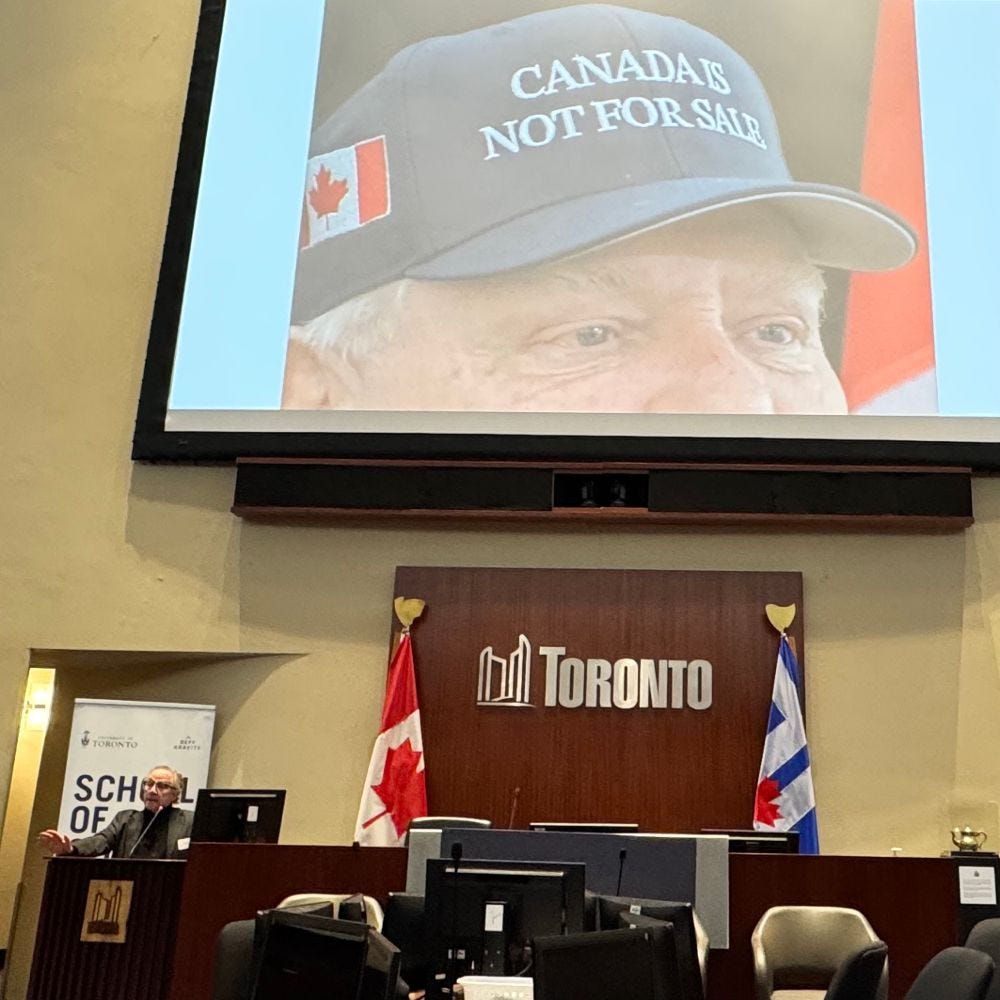

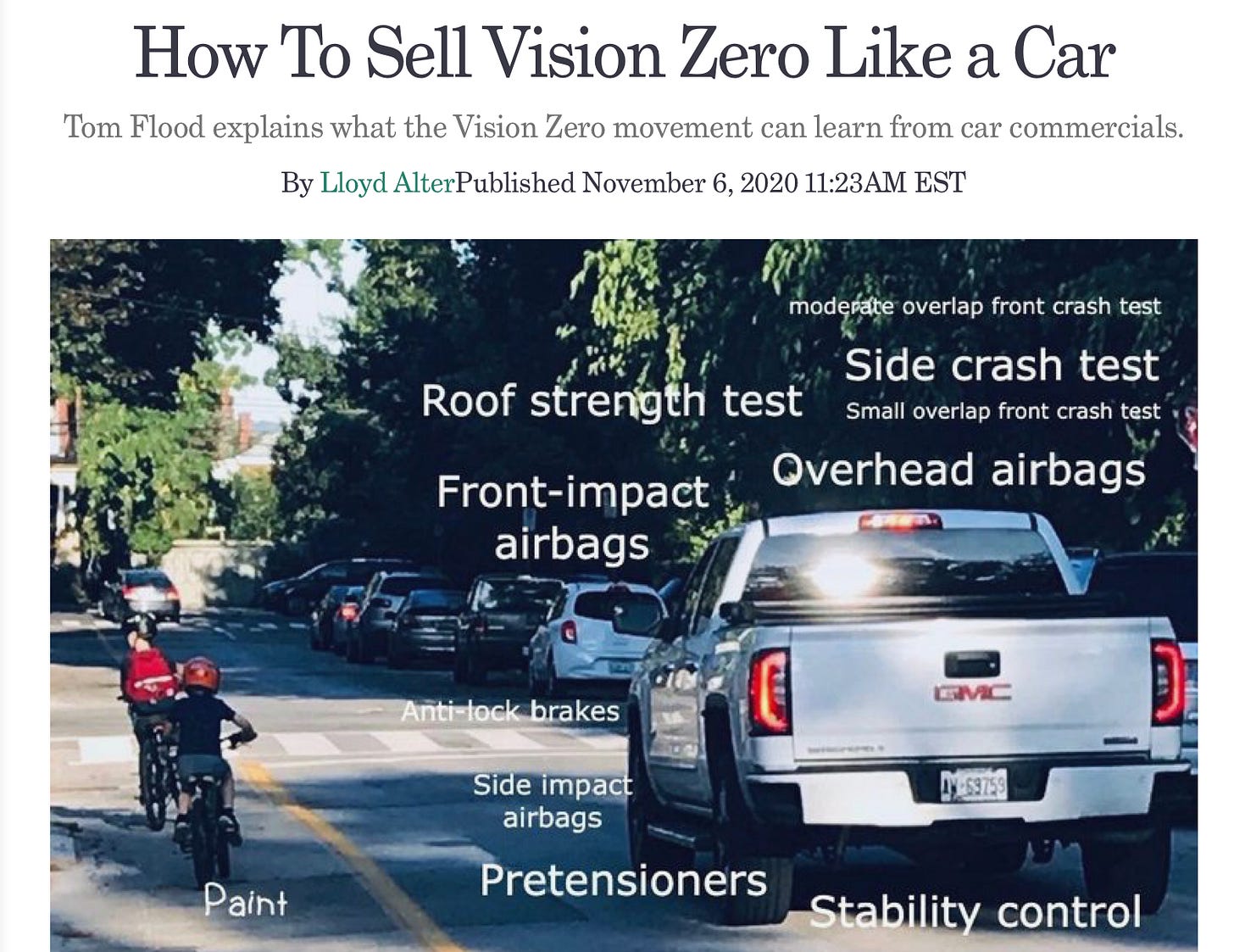
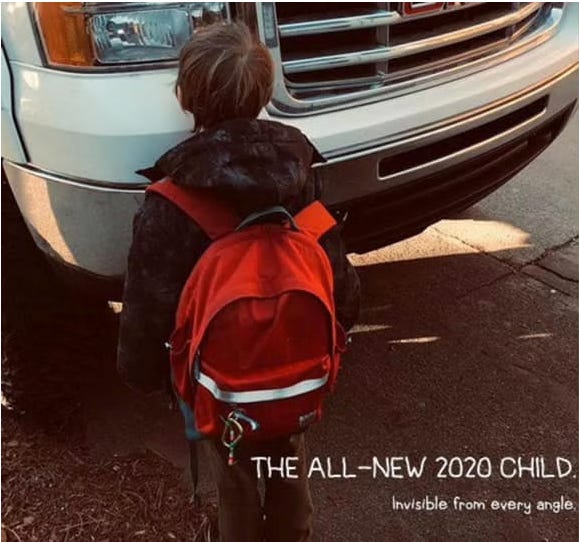

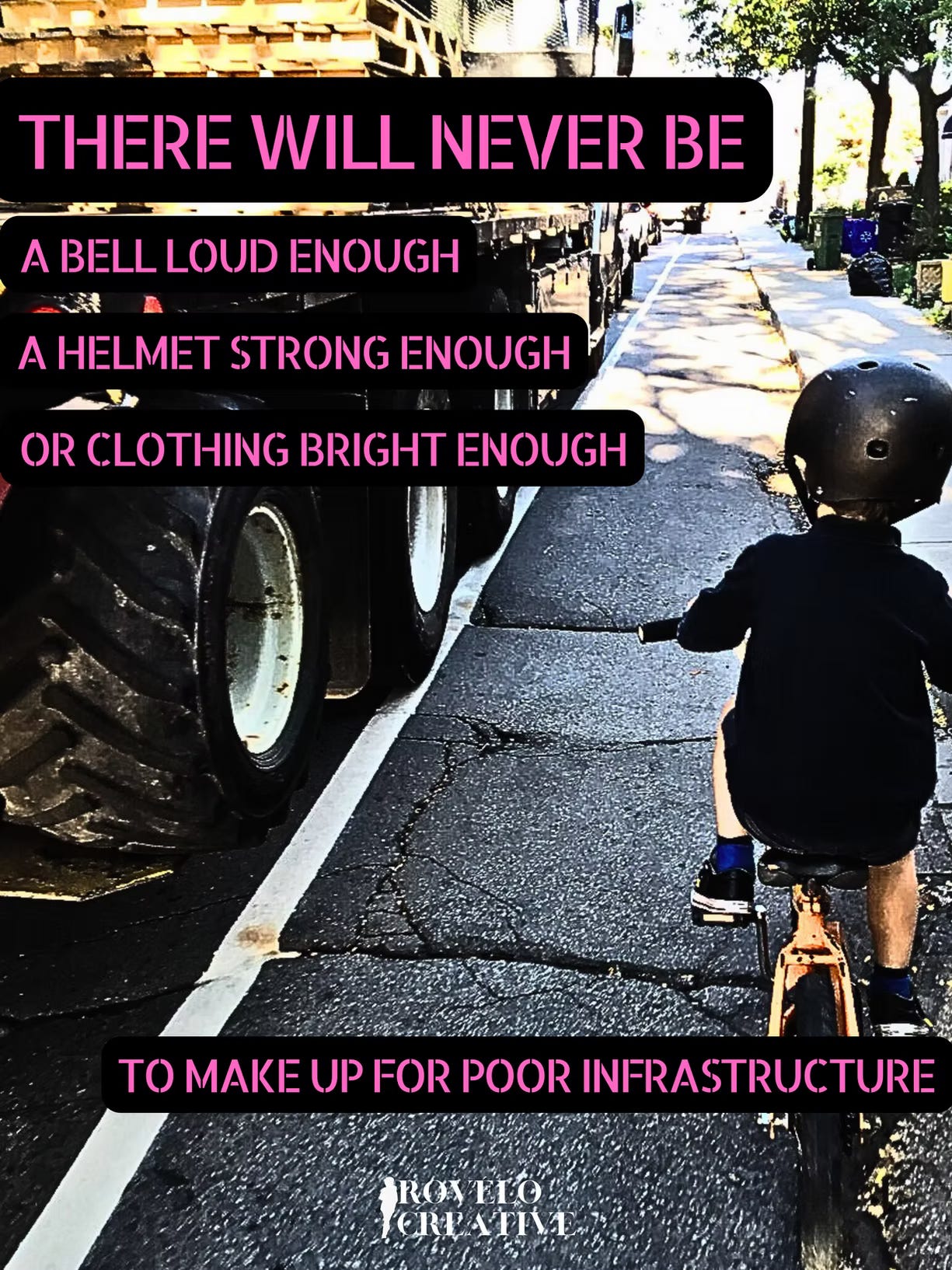



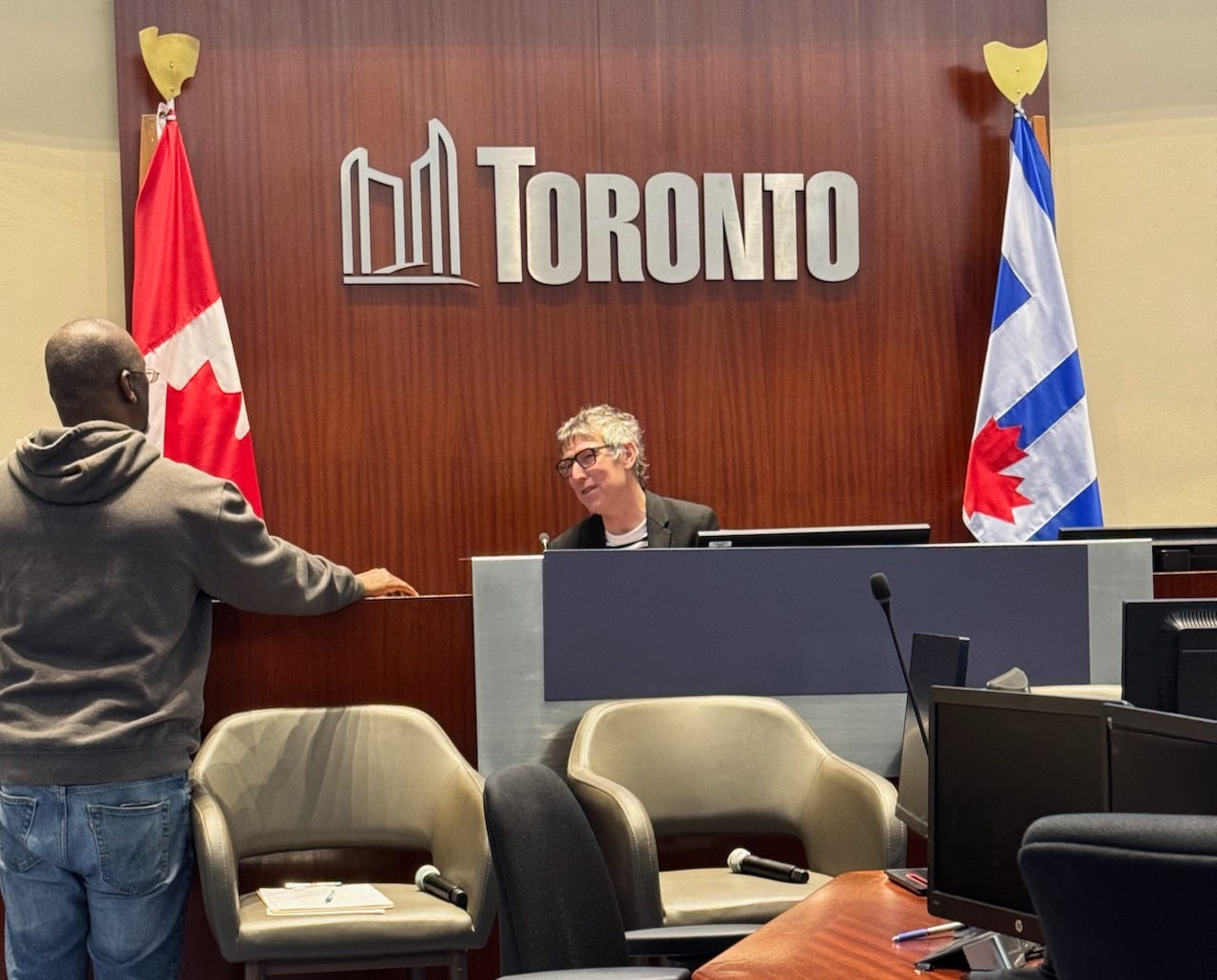
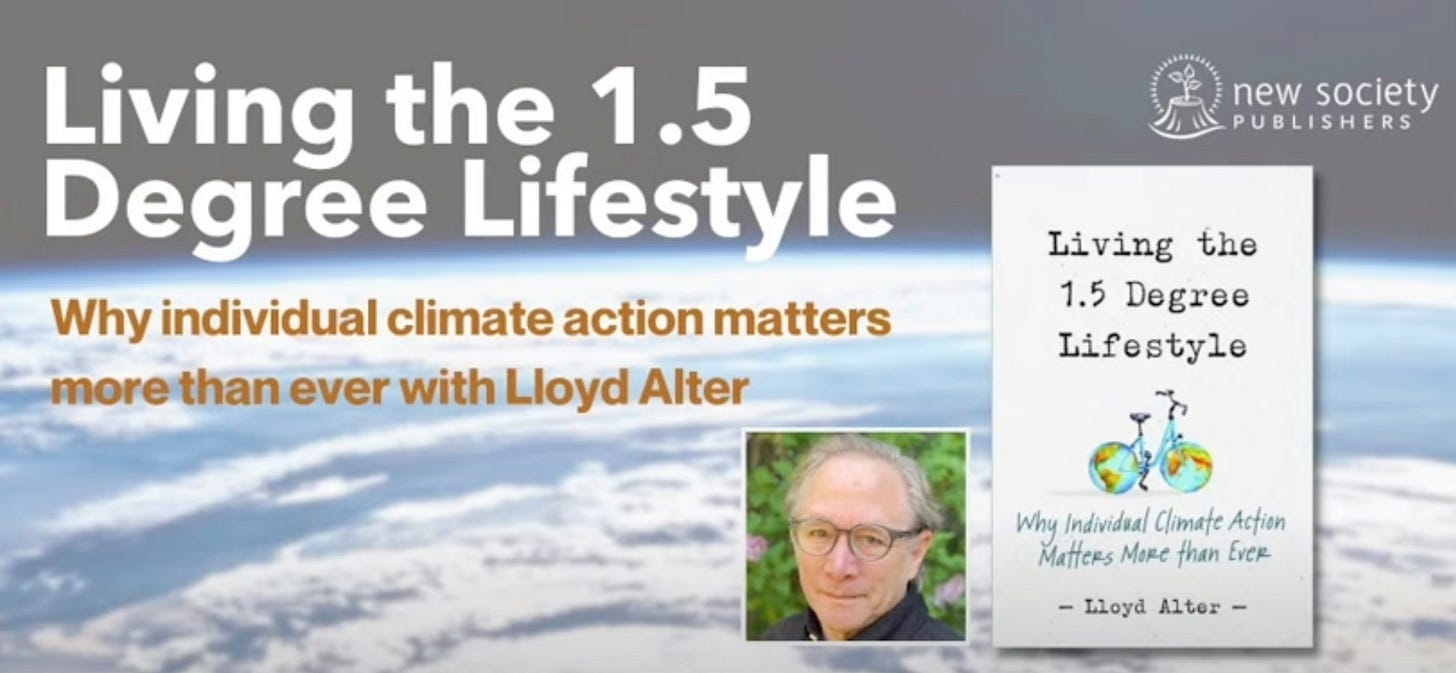
There's a serious issue here in NYC with e-bikes being ridden dangerously and illegally - both delivery bikes and Citibikes. I'm constantly in the position of defending bikes and e-bikes, but the issue needs to be addressed lest support for cycling diminish. A strong group of people is pushing for restrictions, licensing and/or insurance. NYC police have actually started filing criminal charges (not mere summonses) for minor cycling violations.
I've been pushing for an awareness campaign (signage, outreach to delivery cyclists), along with legalizing stop-as-yield, but it's a tough argument to make. So I'm looking for others' suggestions.
For those of us who cycle slowly, to be visible to drivers and those who may not understand what a meter means, get a pool noodle and circle it with battery powered angel lights. If you want to make the noodle a bit more rigid, insert a dowel and duct tape the ends. The whole contraption should be mounted behind your seat with bungee cords so it is perpendicular to the wheels. When you turn on the lights at night, you are far more visible to drivers since they see the horizontal line as opposed to a single red light that may be well below their sight line. I use this in the day to give drivers a hard reminder to stay one meter away from me. Yes it may be dorky...But I am old enough to know that dorkiness can keep one safer than being cool. It also reminds cycling planners that there are cyclists of all ages and abilities who rely on cycling as a primary form of transportation at all hours of the day and night.